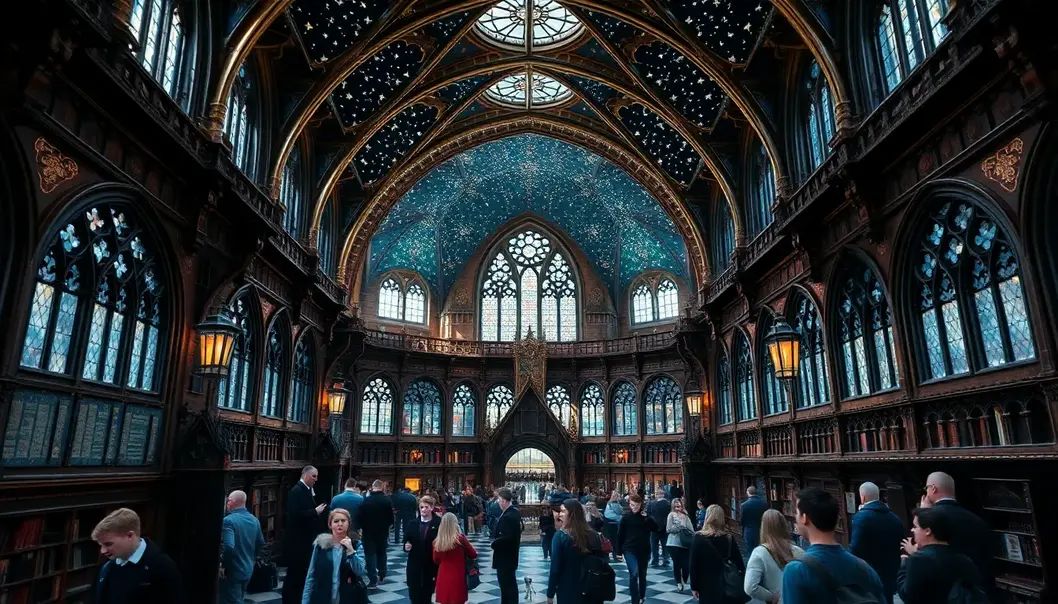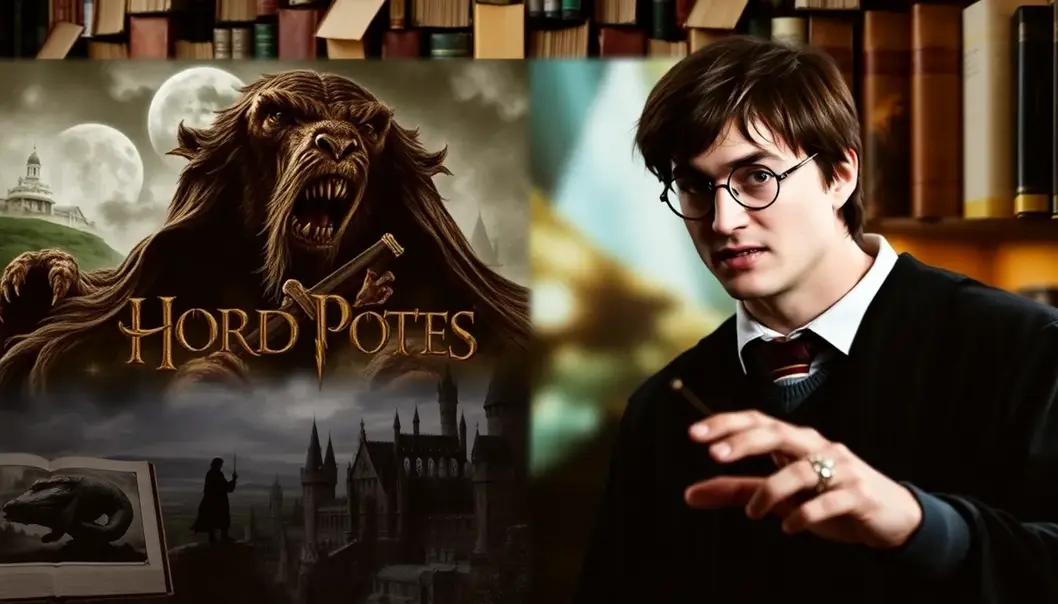Books have the unique ability to ignite imaginations, telling stories that resonate across cultures and epochs. Some of these compelling tales have bridged the gap between literature and film, becoming blockbuster movies that captivate audiences around the world. For busy professionals, understanding the journey from page to screen can provide insightful lessons in creativity and adaptation. This article delves into two significant novels whose narratives transcended their original format, sparking cinematic magic and leaving a lasting impact on popular culture. Explore how these stories evolved, the creative decisions behind their adaptations, and the way they continue to influence both literature and film today.
J.R.R. Tolkien’s Middle-earth: From Page to Epic Saga

J.R.R. Tolkien’s ‘The Lord of the Rings’ stands as a monumental literary achievement, deeply rooted in rich lore and intricate storytelling. Transforming this intricate tapestry into an equally compelling cinematic experience was no small feat, yet Peter Jackson and his team achieved a remarkable metamorphosis, one that remains a landmark achievement in film adaptation.
Peter Jackson embarked on this ambitious project with a vision that respected Tolkien’s narrative depth while embracing the necessity of adaptation. His first challenge was condensing the sprawling story into a trilogy of films. The novels spanned over a thousand pages brimming with diverse cultures, languages, and histories. Jackson’s approach focused on the essence of the narrative: the epic struggle between good and evil, the power of friendship, and the resilience of the seemingly insignificant.
Maintaining Tolkien’s core themes necessitated a careful balance, honoring the original text while making it accessible to audiences potentially unfamiliar with the books. Jackson’s dedication to this balance was evident in his attention to detail, from the Shire’s idyllic landscape to Mordor’s ominous gloom. Each visual was crafted with precision, ensuring fidelity to the vivid descriptions Tolkien articulated.
Technological innovation played a critical role in bringing Middle-earth to life, particularly the groundbreaking use of CGI. The creation of Gollum was a testament to the advancements in motion capture technology, blending Andy Serkis’s physical performance with digital wizardry. This seamless integration set new standards for how fantasy realms could be visualized cinematically and added an emotional depth to Gollum that resonated with audiences globally.
Storytelling techniques also adapted to suit the film format. Jackson employed sweeping landscapes and epic battle sequences, which captured the novel’s grandeur while adding cinematic tension. By focusing on character-driven moments, such as Frodo’s internal struggle and Aragorn’s burden of leadership, the films maintained an emotional core that aligned with Tolkien’s vision.
Jackson’s adaptation wasn’t merely a cinematic undertaking; it was a cultural phenomenon that introduced a new generation to Tolkien’s work. The films’ success rekindled interest in the novels, demonstrating the enduring power of Tolkien’s world. The trilogy grossed nearly $3 billion worldwide, an indicator of its profound impact on global audiences. Jackson’s adaptation bridged the gap between literature and film, underscoring storytelling’s ability to transcend mediums and unite diverse audiences.
In conclusion, the journey from ‘The Lord of the Rings’ pages to its cinematic rendition was not only a triumph of filmmaking but also a testament to the enduring appeal of well-crafted stories. Peter Jackson’s films honored Tolkien’s vision, showcasing how literature can masterfully be reimagined for the screen, engaging both long-time fans and new audiences alike.
The Magical Realism of ‘Harry Potter’: A Wizard’s Journey to the Big Screen

J.K. Rowling’s ‘Harry Potter’ series, steeped in magical realism, became a cornerstone of literary and cinematic achievement. The transition from its richly textured written form to a beloved film franchise offers a masterclass in adaptation, emphasizing both faithfulness and innovation.
In the literary world, magical realism blurs the lines between fantasy and reality, embedding magic in ordinary contexts. Rowling excelled at crafting a universe where magic intertwined seamlessly with the mundane. This duality—the simple life of a young boy and the extraordinary world he discovers—posed unique challenges in film adaptation, where visual storytelling must represent the imaginative depth and complexity of text.
The filmmakers faced the formidable task of translating Rowling’s vivid descriptions into a visual medium, capturing not just the spell-casting and mystical creatures, but the underlying themes of friendship, bravery, and choice. The creation of iconic locations, like the bustling Diagon Alley or the soaring spires of Hogwarts, required a harmonious blend of set design, special effects, and CGI. These elements, while necessary, were only parts of a greater whole that respected the source material’s essence.
Central to this process was the challenge of maintaining character integrity. Daniel Radcliffe, Emma Watson, and Rupert Grint, cast as the main trio, brought to life the beautifully complex relationships with authenticity. Their portrayals navigated the incremental growth from wide-eyed novices to seasoned defenders of truth, ensuring the heart of Rowling’s narrative remained at the forefront.
Adapting seven books into eight films involved intricate decisions on interpretation. Certain subplots fell away, streamlining narratives to suit cinema’s time constraints. Yet, the creative team astutely prioritized scenes that encapsulated the soul of the series—such as Harry’s arrival at Hogwarts, the Yule Ball’s enchantment, and the final showdown’s dramatic fervor.
Balancing narrative fidelity with cinematic needs included introducing scenes or perspectives that deviated slightly, enhancing the films’ appeal to a broader audience without alienating core fans. This careful calibration prevented the dilution of the story’s thematic richness, instead enriching it.
Ultimately, translating the subtlety of magical realism from page to screen required a collaborative synergy of visionaries in literature, technology, and performance. Peter Jackson’s vision for ‘The Lord of the Rings’ showcased similar achievements in adaptation, and the ‘Harry Potter’ films followed suit by bridging the expansiveness of Rowling’s imagination with the immersive potential of modern cinema. While digital effects made magic tangible, it was the films’ thematic continuity—loyalty, courage, and love—that ensured viewers could embark on Harry’s journey, believing in the magic as resolutely as in their first reading of the books.
Final words
The enchanting transformation from novel to screen breathes new life into beloved stories, reaching vast audiences and setting benchmarks in filmmaking. For professionals looking to understand the craft of storytelling and adaptation, exploring these iconic book-to-film journeys offers invaluable insights. Let these tales inspire creativity and ingenuity in your own professional endeavors.
Intrigued by the art of adaptation? Discover more exciting book-to-film stories and insights. Visit our website for further reading!
Learn more: https://www.film-and-literature-insights.com
About us
Film & Literature Insights offers a platform exploring the intersection of books and films, providing resources and articles for individuals interested in adaptive storytelling.

